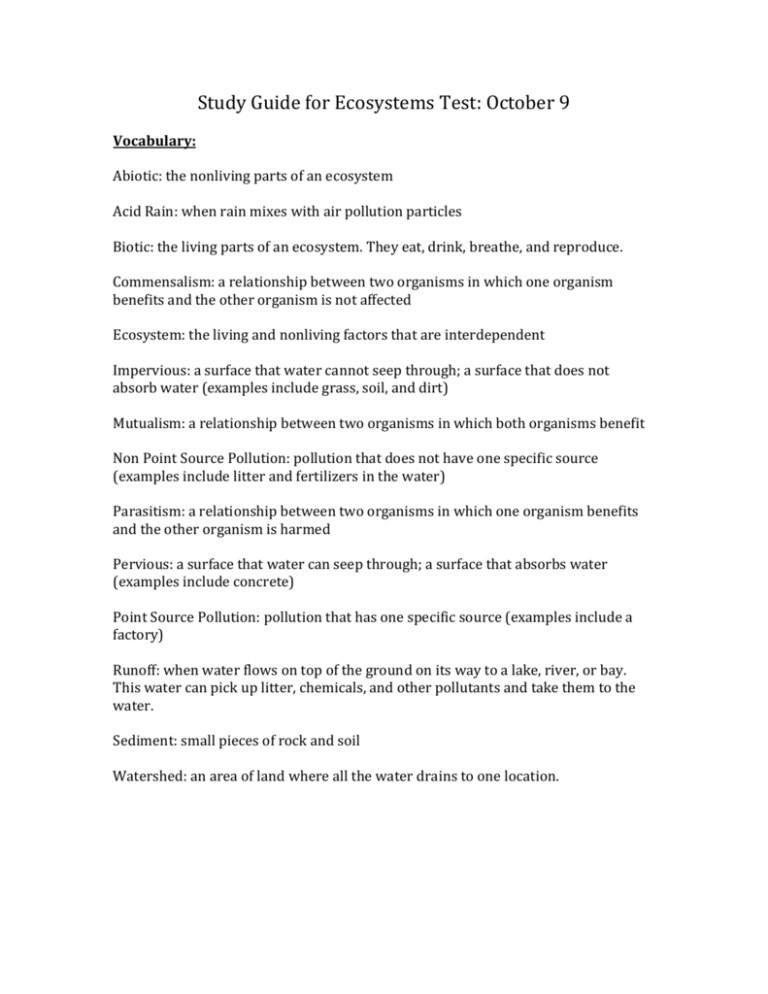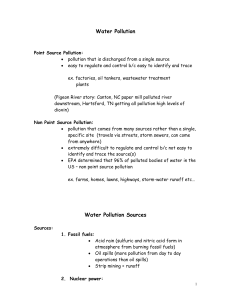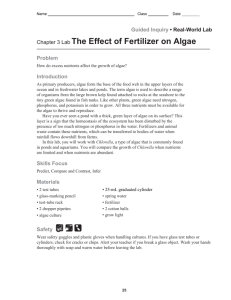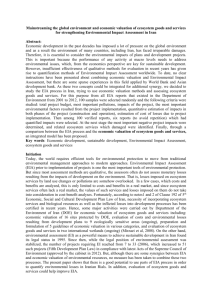Ecosystems Study Guide - Answers
advertisement

Study Guide for Ecosystems Test: October 9 Vocabulary: Abiotic: the nonliving parts of an ecosystem Acid Rain: when rain mixes with air pollution particles Biotic: the living parts of an ecosystem. They eat, drink, breathe, and reproduce. Commensalism: a relationship between two organisms in which one organism benefits and the other organism is not affected Ecosystem: the living and nonliving factors that are interdependent Impervious: a surface that water cannot seep through; a surface that does not absorb water (examples include grass, soil, and dirt) Mutualism: a relationship between two organisms in which both organisms benefit Non Point Source Pollution: pollution that does not have one specific source (examples include litter and fertilizers in the water) Parasitism: a relationship between two organisms in which one organism benefits and the other organism is harmed Pervious: a surface that water can seep through; a surface that absorbs water (examples include concrete) Point Source Pollution: pollution that has one specific source (examples include a factory) Runoff: when water flows on top of the ground on its way to a lake, river, or bay. This water can pick up litter, chemicals, and other pollutants and take them to the water. Sediment: small pieces of rock and soil Watershed: an area of land where all the water drains to one location. Practice Questions: 1. Why is it beneficial to plant more trees and bushes along the banks of a river? -Plants can stop trash before it gets in to the water. Think about the Anacostia trip. A lot of trash was trapped in the bushes along the water. -The plant roots also hold sediment in place to keep it from getting in to the water. 2. Why is it a problem to have too much impervious surface in an ecosystem? -Since water is not absorbed, it runs off of the ground. This runoff can carry trash, chemicals, and other pollutants in to rivers, lakes, and bays. 3. How does an algae bloom form? -Algae is a plant. An algae bloom forms when there is extra fertilizer in the water. This fertilizer can be chemical fertilizer or manure (poop). 4. How are algae blooms a problem when they are alive? -Algae blooms block the sun light so plants in the water die. 5. How are algae blooms a problem when they are dead? -Decomposers come to eat the dead algae. These decomposers need oxygen to live. So, more decomposers means more oxygen is used up, which leads to less oxygen left in the water for other animals. 6. How is sediment a problem in the water? -Sediment makes the water cloudy, which blocks the sunlight. -Sediment can destroy habitats in the water. -Sediment can clog fish gills. 7. How does non-point source pollution (like fertilizer and litter) end up in the Chesapeake Bay? -When it rains, runoff carries the non-point source pollution to the Bay. 8. Why is it critical to have a neutral pH level in the water? -pH measures acid. A neutral pH means there is not acid in the water. Animals and plants cannot live if there is too much acid in the water. 9. Why is it a problem to not have enough dissolved oxygen in the water? -Fish and other aquatic animals need to have oxygen to stay alive. Low dissolved oxygen can mean that there is a dead algae bloom or there are not enough plants. Be Ready To: Identify biotic and abiotic parts of an ecosystem Identify relationships as mutualism, commensalism, or parasitism Identify surfaces as pervious or impervious Name sources of pollution (point and non-point source)











